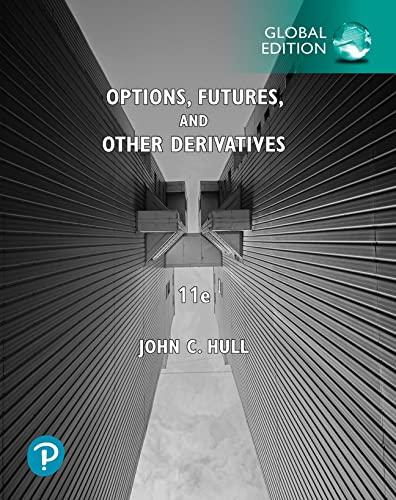Question
Isaac is an entrepreneur who is deciding between two investment projects. Both projects require an investment of $150. He does not have any money, so
Isaac is an entrepreneur who is deciding between two investment projects. Both projects require an investment of $150. He does not have any money, so he needs a loan in order to undertake one of the two projects, which have the following characteristics:
- Project 1 consists of opening a Ugandan style grilled meat restaurant Isaacs Muchomos, which is relatively safe: with 100% probability it succeeds and generates $400 of revenues, and with 0% probability it fails and generates no revenues.
- Project 2 is to open Ice Acc, an ice-skating clinic for children. Although Isaac is an outstanding skater, this project is much riskier: with 25% probability, it succeeds and generates $1150 of revenues, and with 75% probability it fails and generates no revenues.
Lender
Yaxi is a banker who may offer a loan to Isaac. Yaxis opportunity cost of money is 10%, which means that she would earn a 10% interest rate if she invested the money in a bank instead of lending it to Isaac. Yaxi offers limited liability contracts which means that Isaac does not have to repay the loan in full if his project fails. However, if Isaacs project succeeds, he must repay the full loan (principal plus interest). If his project fails, he only has to repay 60% of the total debt obligation (for example, if Yaxi charges him 30% interest rate on the loan, he would have to repay 0.6*(1+0.3)*150 if his project fails).
The questions to follow explore scenarios where Yaxi is a monopolist and scenarios of perfect competition. To review a bit of microeconomics:
- A monopolist faces no competition, so can set their price to whatever they choose. However, Isaac can still of course choose not to buy.
- Under perfect competition, there are zero economic profits, which means Yaxi cannot earn more than her opportunity cost or she would be undercut by a competitor.
Symmetric Information
First, assume that there is symmetric information such that Yaxi can specify which project Isaac must select and she can enforce this selection. A credit contract thus specifies two terms: the Project and the interest rate. Let
-
Let
 y1 and
y1 and  y2 denote Isaacs incomes and
y2 denote Isaacs incomes and  1 and
1 and  2 denote Yaxis profits from Isaacs Project 1 and 2, respectively. Derive the expressions for
2 denote Yaxis profits from Isaacs Project 1 and 2, respectively. Derive the expressions for  E(y1) and
E(y1) and  E(y2), the expected values of Isaacs incomes under the two projects; and,
E(y2), the expected values of Isaacs incomes under the two projects; and,  E(1) and
E(1) and  E(2), the expected values of Yaxis profits from loans that finance Projects 1 and 2 respectively, as functions of the interest rate, i.
E(2), the expected values of Yaxis profits from loans that finance Projects 1 and 2 respectively, as functions of the interest rate, i.
Step by Step Solution
There are 3 Steps involved in it
Step: 1

Get Instant Access to Expert-Tailored Solutions
See step-by-step solutions with expert insights and AI powered tools for academic success
Step: 2

Step: 3

Ace Your Homework with AI
Get the answers you need in no time with our AI-driven, step-by-step assistance
Get Started


